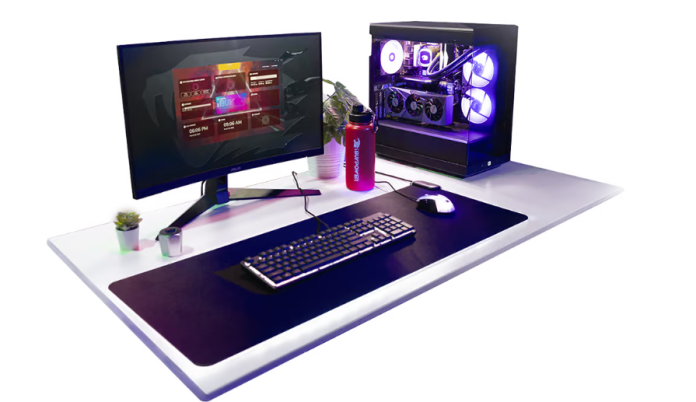In this blog, we will explore the world of personalized computing, the benefits, limitations, considerations, and a guide to creating your dream machine. This guide will empower you with the knowledge to build a custom computer tailored to your specific needs and preferences, outperforming pre-built options and providing an unrivaled computing experience. Let’s get building!
Understanding the Essence of Custom Build Computers
The Advantages of Customization
Custom build computers offer numerous advantages over off-the-shelf solutions. When you build your computer, you can handpick each component, ensuring compatibility, performance, and value for money. This level of customization lets you optimize your system for gaming, content creation, programming, or any other specific task, resulting in a more efficient and powerful computing experience.
Tailoring Performance to Your Needs
Unlike pre-built systems that cater to a broad audience, custom build computers are designed to meet your exact requirements. You can select the best processors, graphics cards, storage solutions, and memory modules to match your workload and budget. Whether you use your computer casually, professionally, or for gaming, a customized PC can be fine-tuned for exceptional performance and durability.
Key Components and Considerations
The Central Processing Unit (CPU)
The CPU serves as the brain of your customized PC, and choosing the right one is crucial. Options from industry-leading manufacturers like Intel and AMD have different performance levels and power consumption. Understanding your needs and future-proofing considerations are vital when selecting the ideal CPU.
Graphics Processing Unit (GPU)
Gamers and content creators often prioritize the GPU, This has a direct impact on graphics performance. NVIDIA and AMD offer a wide range of GPUs, each catering to certain requirements, including 3D rendering, graphic designing, gaming, or video editing. Balancing GPU power with other parts ensures a seamless computing experience.
Random Access Memory (RAM)
RAM is necessary for multitasking and overall system responsiveness. Choosing the right amount of RAM relies on the applications you use and the size of your projects. A minimum of 16GB is recommended for most users and higher capacities for specialized tasks.
Storage Solutions
Custom build computers can benefit from a combination of fast and spacious storage options. Solid-State Drives (SSDs) offer lightning-fast boot times and app loading, while Hard Disk Drives (HDDs) provide space for data storage. Striking the right balance between the two ensures an optimal computing experience.
Motherboard
The motherboard is your system’s backbone, connecting all components and peripherals. Choosing a high-quality motherboard with sufficient expansion slots, USB ports, and connectivity options is essential to accommodate future upgrades and peripherals.
Power Supply Unit (PSU)
A reliable PSU is crucial for the stability and longevity of your computer. Selecting a power supply with sufficient wattage and efficiency ensures smooth operation and protects your valuable components from fluctuations.
Cooling Solutions
To maintain optimal performance, your computer needs proper cooling. Air and liquid cooling solutions are available, each with pros and cons. Properly cooling your CPU and GPU prevents overheating and enhances overall system stability.
Building Your Custom PC – A Step-by-Step Guide
Step 1: Define Your Purpose
Outline your computing needs (gaming, content creation, or general office tasks) to guide component choices for your personalized computer.
Step 2: Set a Budget
Determine your investment limit for a well-balanced computer that meets your performance and cost requirements.
Step 3: Select Components
Choose components carefully based on your purpose and budget, ensuring compatibility between the CPU, GPU, motherboard, and other parts.
Step 4: Assemble Your PC
Follow the computer builder’s instructions to assemble your computer. Take time for proper connections and thermal paste application.
Step 5: Install the Operating System and Drivers
After assembly, install your preferred operating system and essential drivers. Regularly update for optimal performance and security.
Step 6: Test and Optimize
Thoroughly test all components to ensure functionality. Optimize settings and install software to unleash your custom-built computer’s full potential.
Contact PC Building Services in Texas
Embrace the power of personalization with the help of custom PC building providers in Texas, like Computer Builders Anonymous. Their experts will ensure that you have the best custom build PC that truly allows you to experience exceptional computing.
FAQs
Can I upgrade my self-built computer in the future?
Yes, one of the advantages is the ability to upgrade parts as you wish. Any new parts you add to your computer must be compatible with the system.
What should I do if I run into problems while building my computer?
Head to a nearby PC building shop immediately.
What components are needed for PC building?
Here is what you will need for custom building a computer.
- GPU
- CPU
- PSU
- Motherboard
- RAM
- Storage
- Computer Case
You may also need a monitor, keyboard, and mouse.
How much does PC building cost?
The cost varies based on the parts you choose. Setting a budget and examining your specific needs will help decide the overall cost of your system.
Read article more usatechtimes










